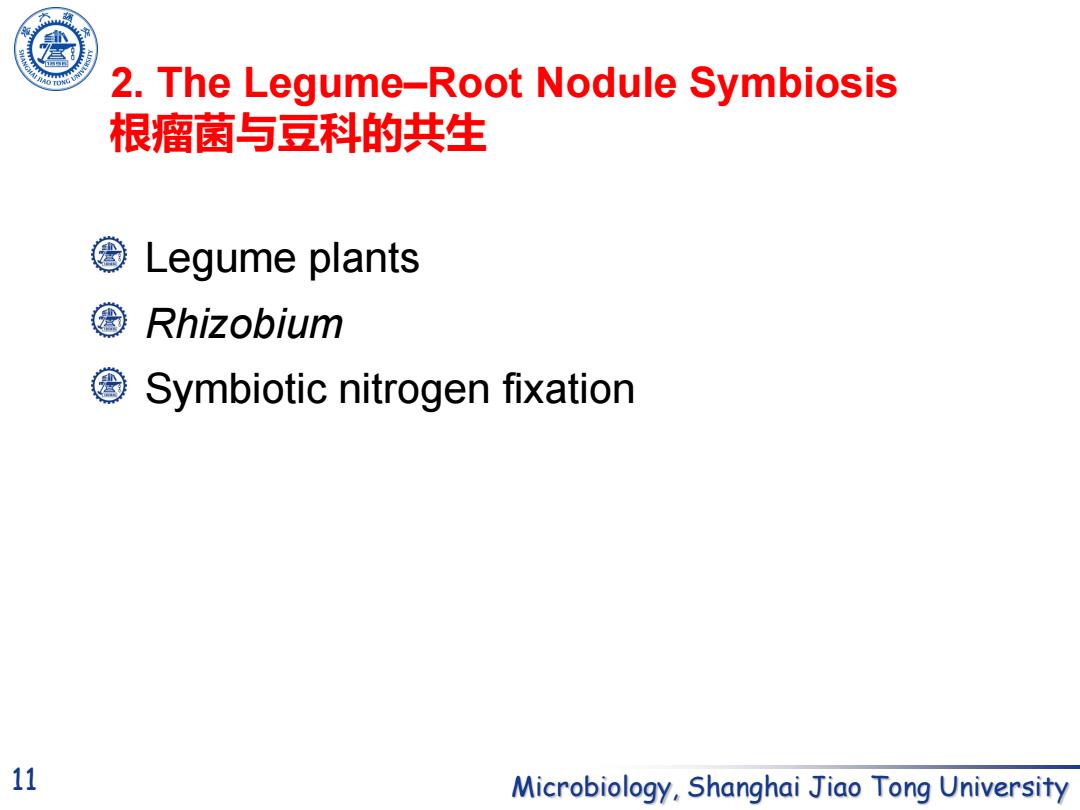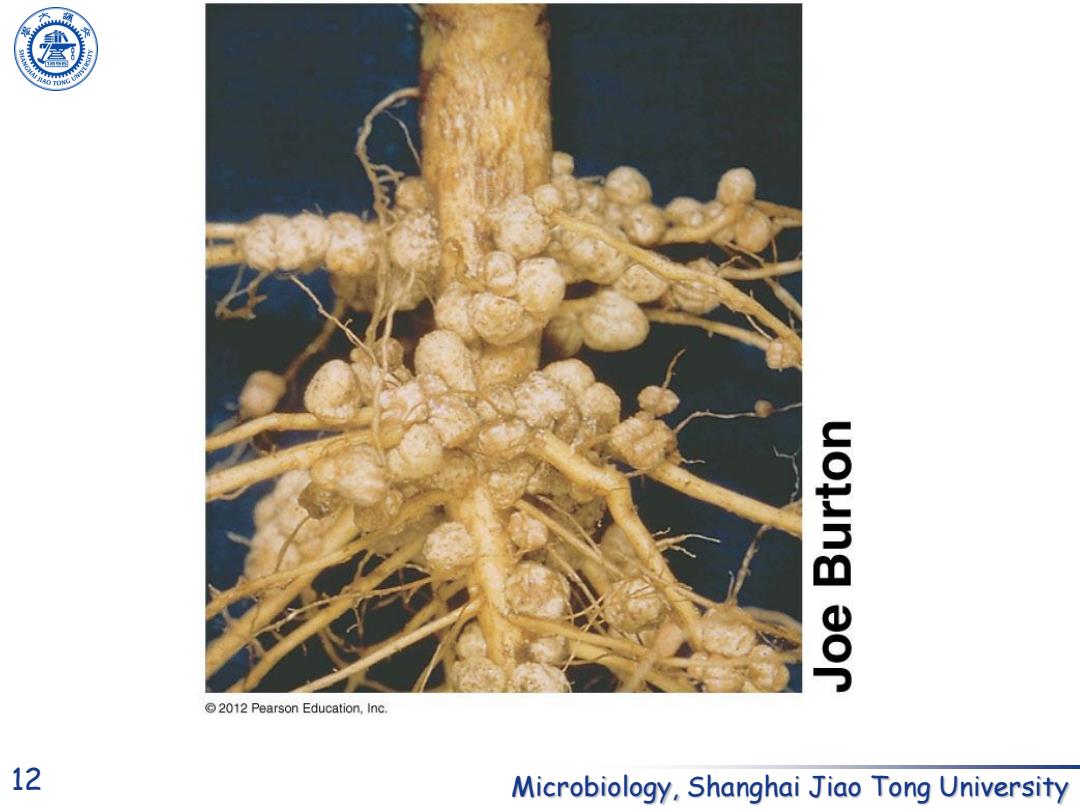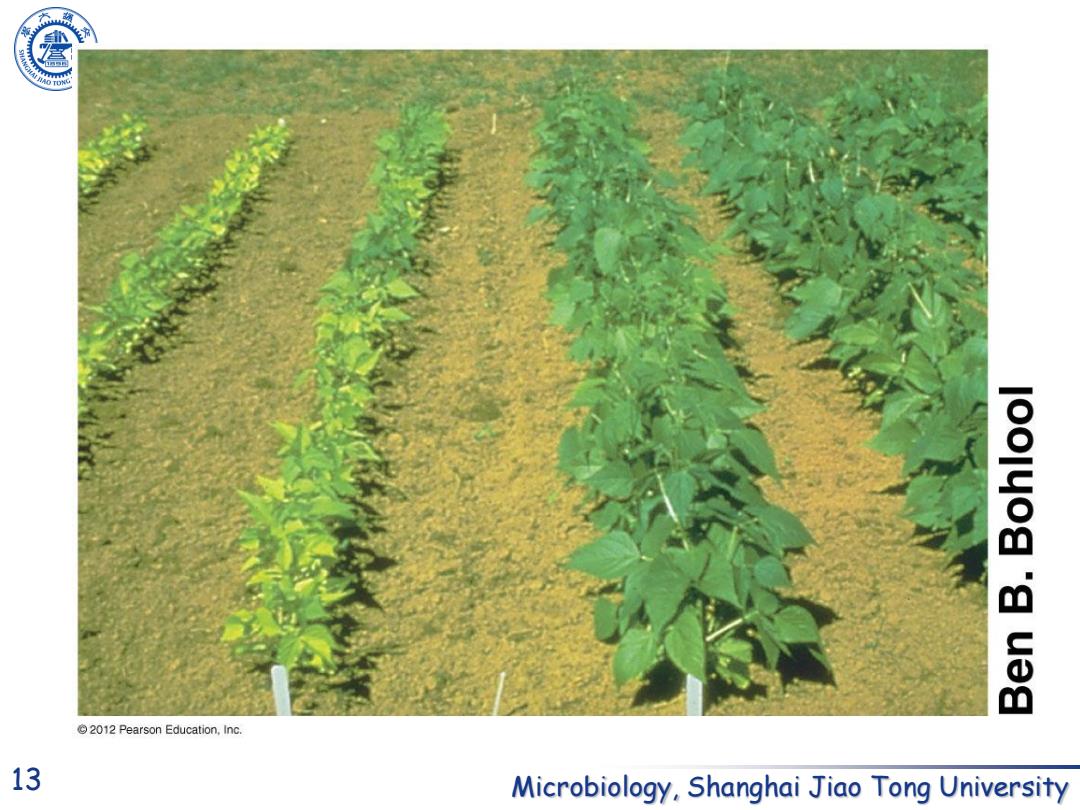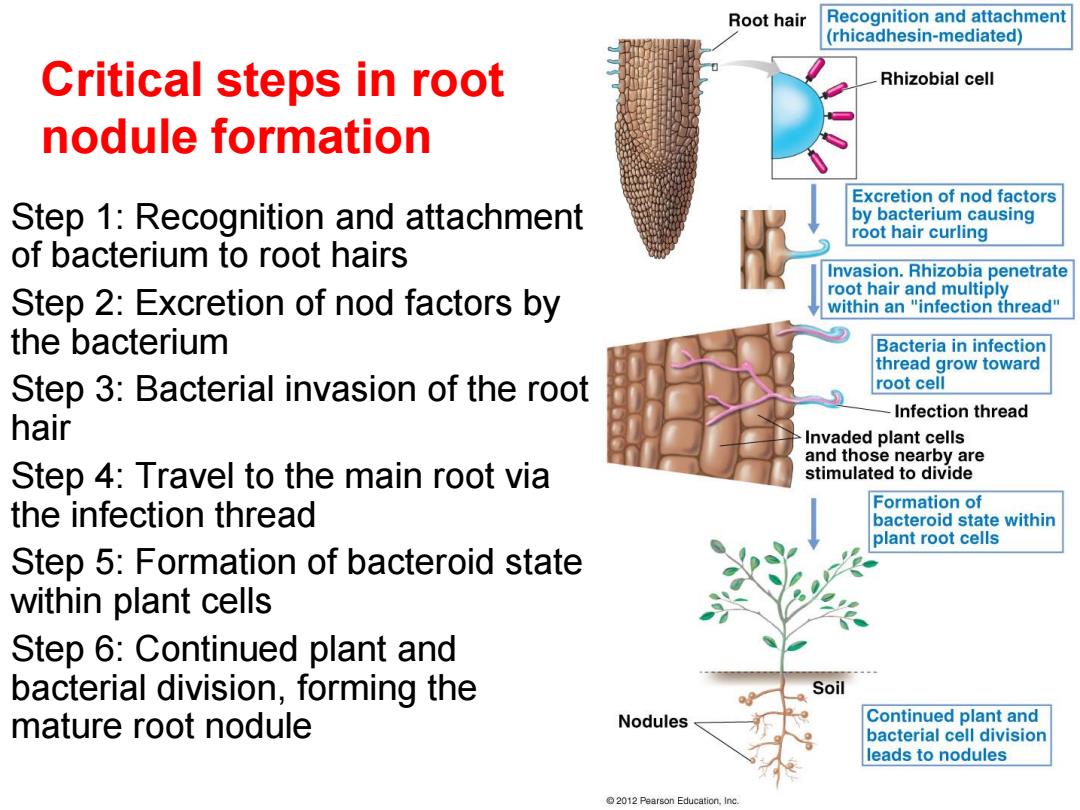
2.The Legume-Root Nodule Symbiosis 根瘤菌与豆科的共生 Legume plants Rhizobium Symbiotic nitrogen fixation 11 Microbiology,Shanghai Jiao Tong University
11 Microbiology, Shanghai Jiao Tong University 2. The Legume–Root Nodule Symbiosis 根瘤菌与豆科的共生 Legume plants Rhizobium Symbiotic nitrogen fixation

图 2012 Pearson Education,Inc. 12 Microbiology.Shanghai Jiao Tong University
12 Microbiology, Shanghai Jiao Tong University

2012 Pearson Education.Inc. 13 Microbiology.Shanghai Jiao Tong University
13 Microbiology, Shanghai Jiao Tong University

The Legume-Root Nodule Symbiosis Nitrogen-fixing bacteria need O,to generate energy for N,fixation,but nitrogenases are inactivated by O2氧气的需求与影响 In the nodule,O,levels are controlled by the O2-binding protein leghemoglobin豆血红蛋白 14 Microbiology,Shanghai Jiao Tong University
14 Microbiology, Shanghai Jiao Tong University The Legume–Root Nodule Symbiosis Nitrogen-fixing bacteria need O2 to generate energy for N2 fixation, but nitrogenases are inactivated by O2 氧气的需求与影响 In the nodule, O2 levels are controlled by the O2 -binding protein leghemoglobin豆血红蛋白

Root hair Recognition and attachment (rhicadhesin-mediated) Critical steps in root Rhizobial cell nodule formation Excretion of nod factors Step 1:Recognition and attachment by bacterium causing root hair curling of bacterium to root hairs Invasion.Rhizobia penetrate Step 2:Excretion of nod factors by root hair and multiply within an "infection thread" the bacterium Bacteria in infection thread grow toward Step 3:Bacterial invasion of the root root cell Infection thread hair Invaded plant cells and those nearby are Step 4:Travel to the main root via stimulated to divide the infection thread Formation of bacteroid state within plant root cells Step 5:Formation of bacteroid state within plant cells Step 6:Continued plant and bacterial division,forming the Soil mature root nodule Nodules Continued plant and bacterial cell division leads to nodules 2012 Pearson Education,Inc
Critical steps in root nodule formation Step 1: Recognition and attachment of bacterium to root hairs Step 2: Excretion of nod factors by the bacterium Step 3: Bacterial invasion of the root hair Step 4: Travel to the main root via the infection thread Step 5: Formation of bacteroid state within plant cells Step 6: Continued plant and bacterial division, forming the mature root nodule